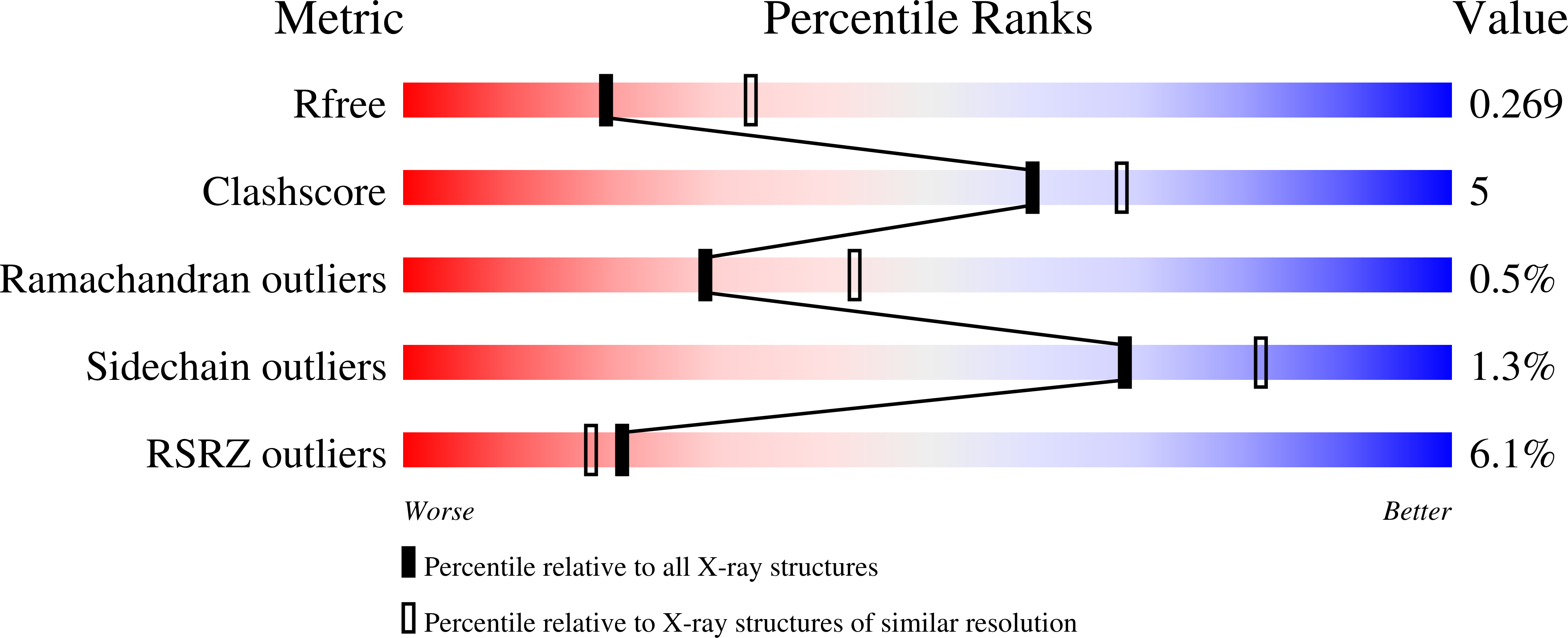
Deposition Date
2021-03-16
Release Date
2021-10-27
Last Version Date
2024-10-16
Entry Detail
PDB ID:
7M2H
Keywords:
Title:
Structural Snapshots of Intermediates in the Gating of a K+ Channel
Biological Source:
Source Organism:
Mus musculus (Taxon ID: 10090)
Streptomyces lividans (Taxon ID: 1916)
Streptomyces lividans (Taxon ID: 1916)
Host Organism:
Method Details:
Experimental Method:
Resolution:
2.64 Å
R-Value Free:
0.26
R-Value Work:
0.23
R-Value Observed:
0.23
Space Group:
P 4


